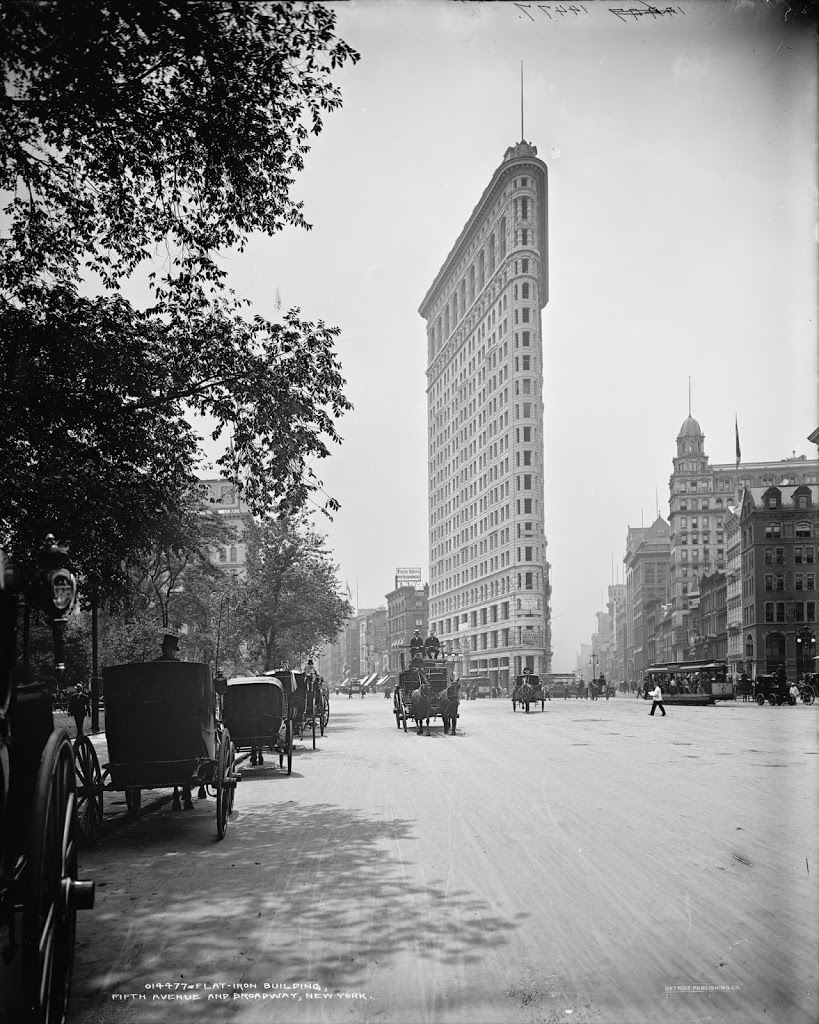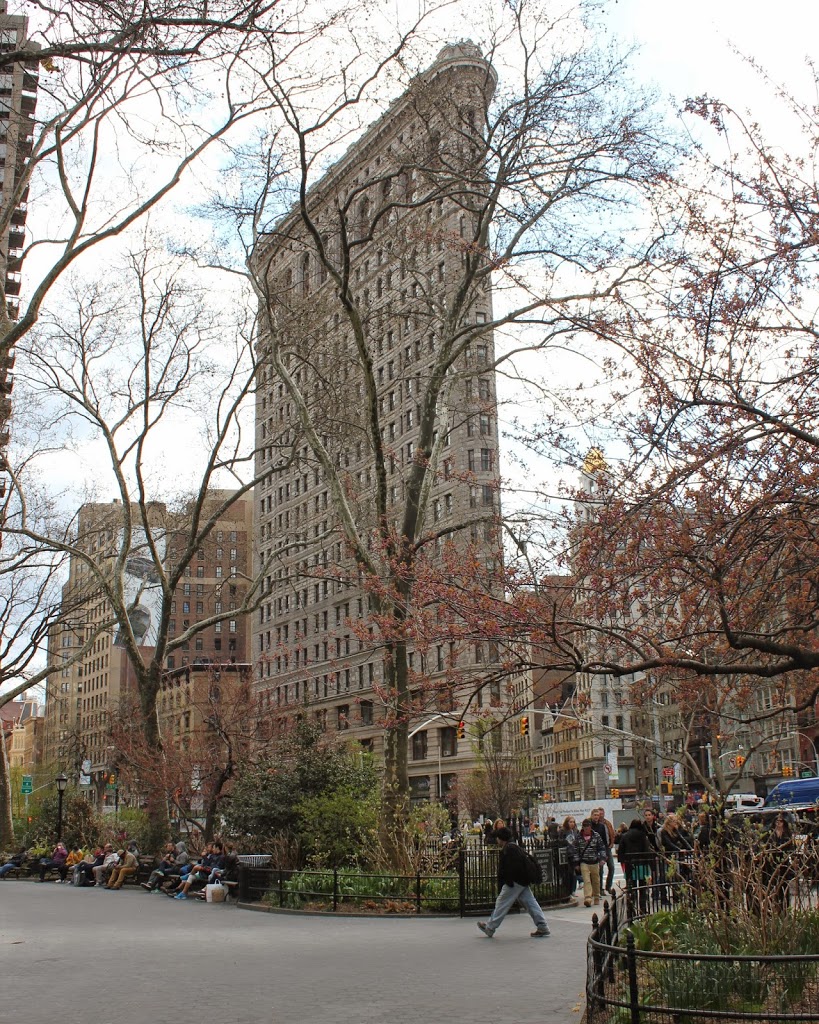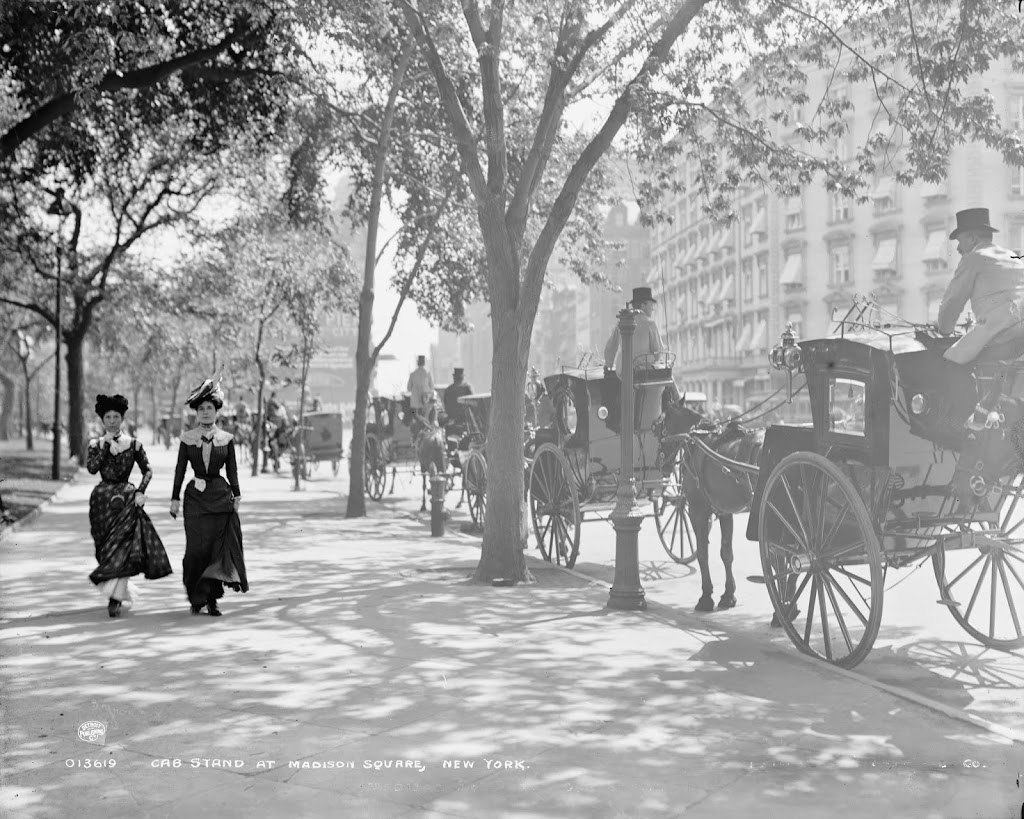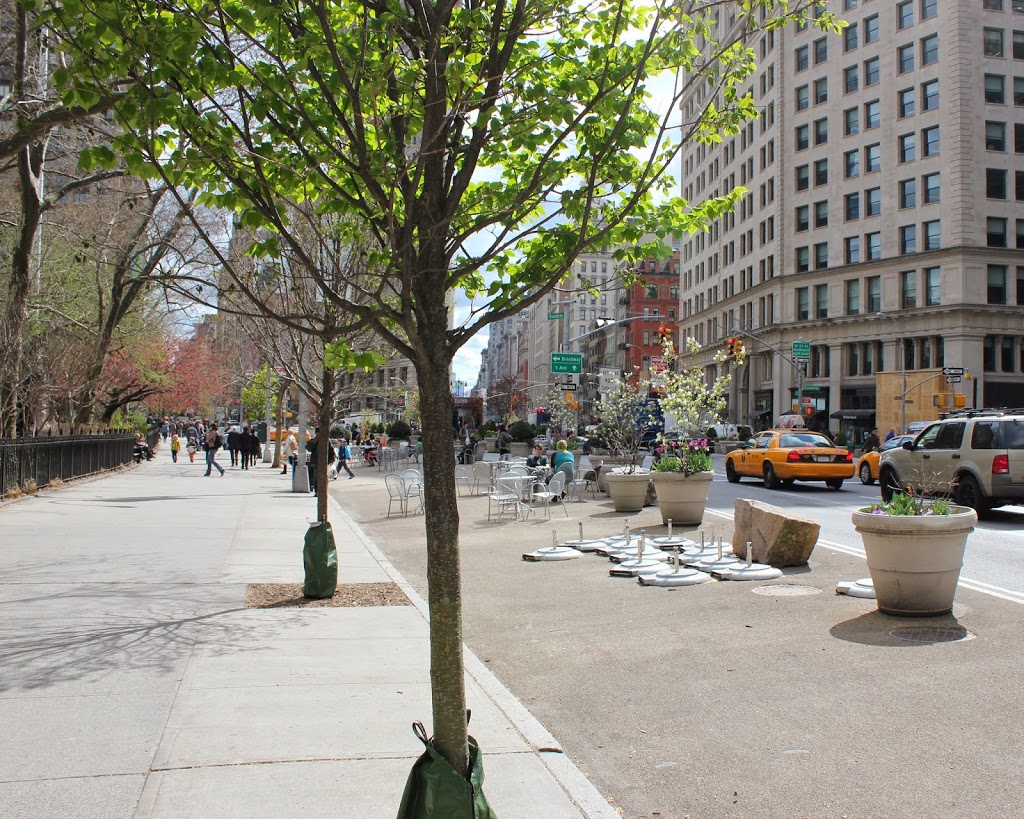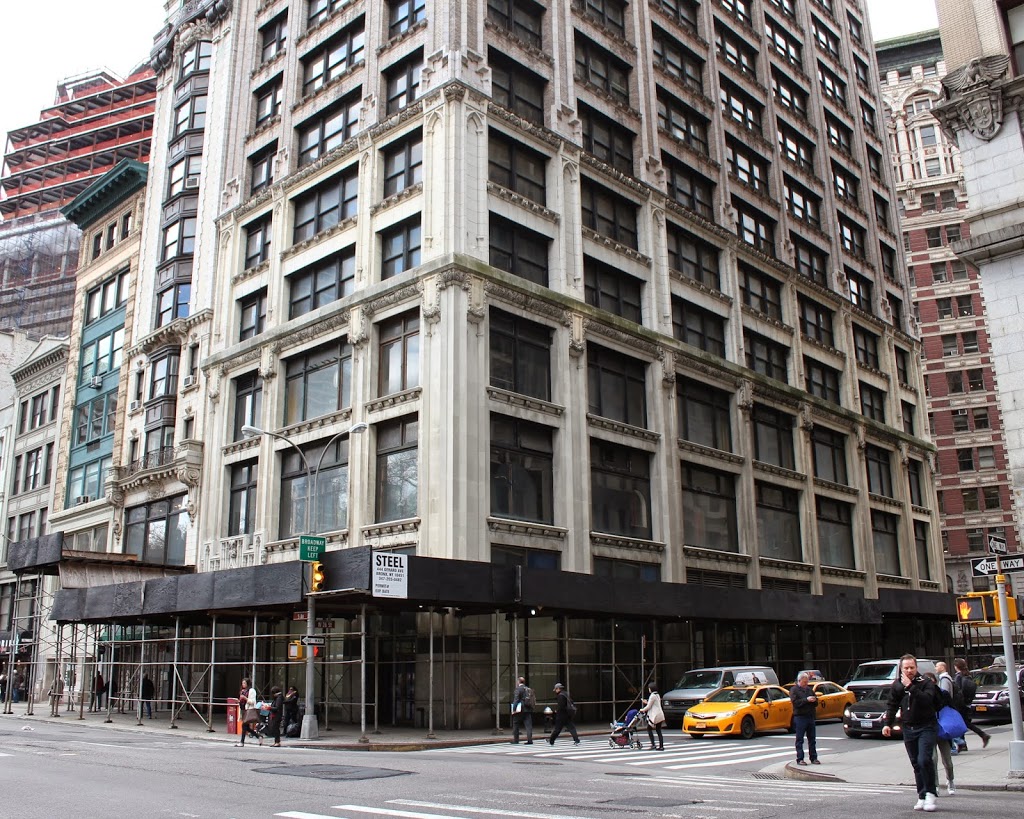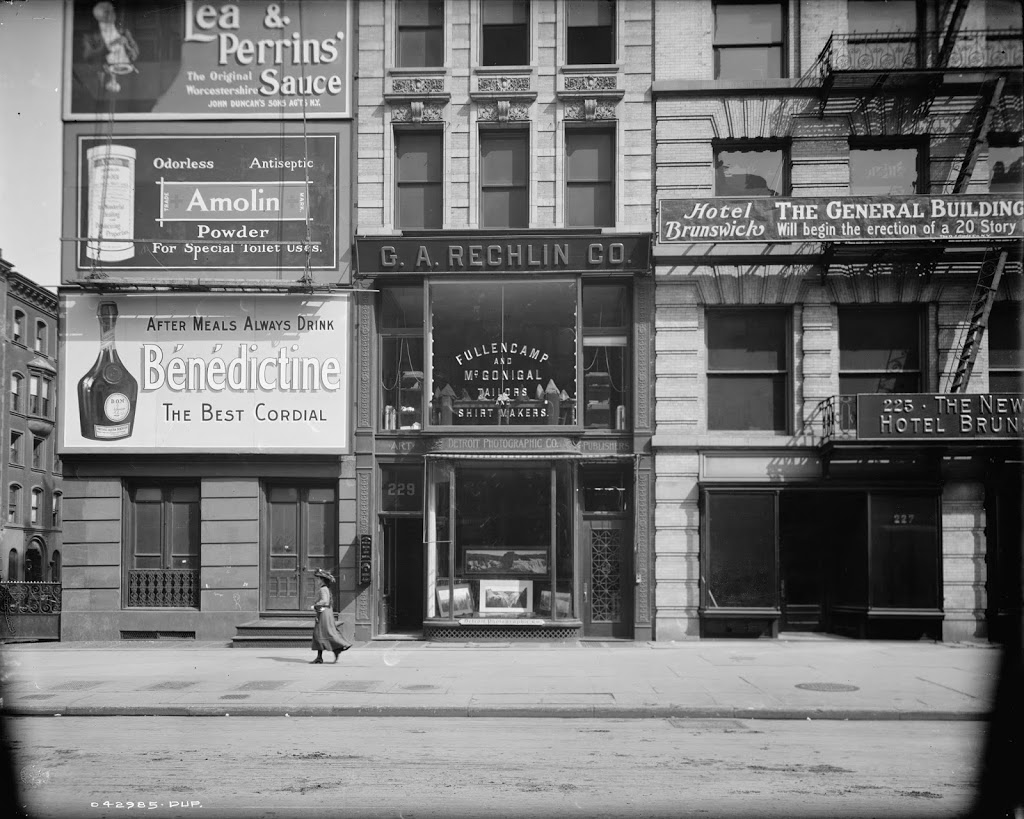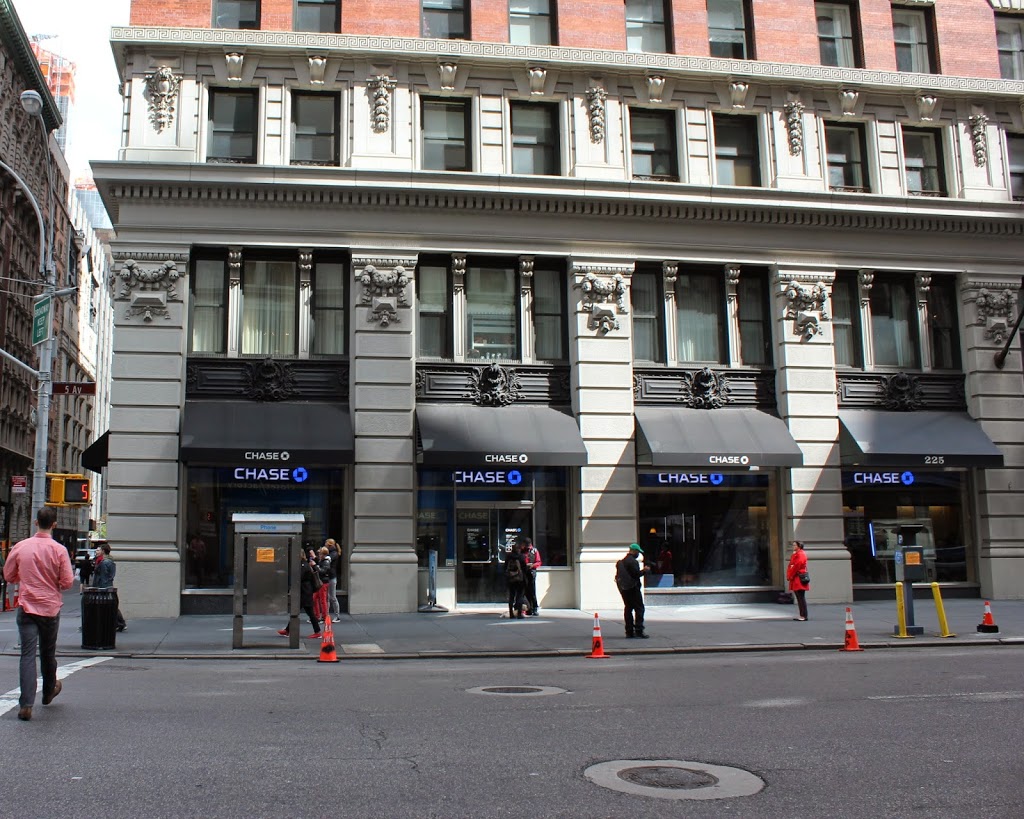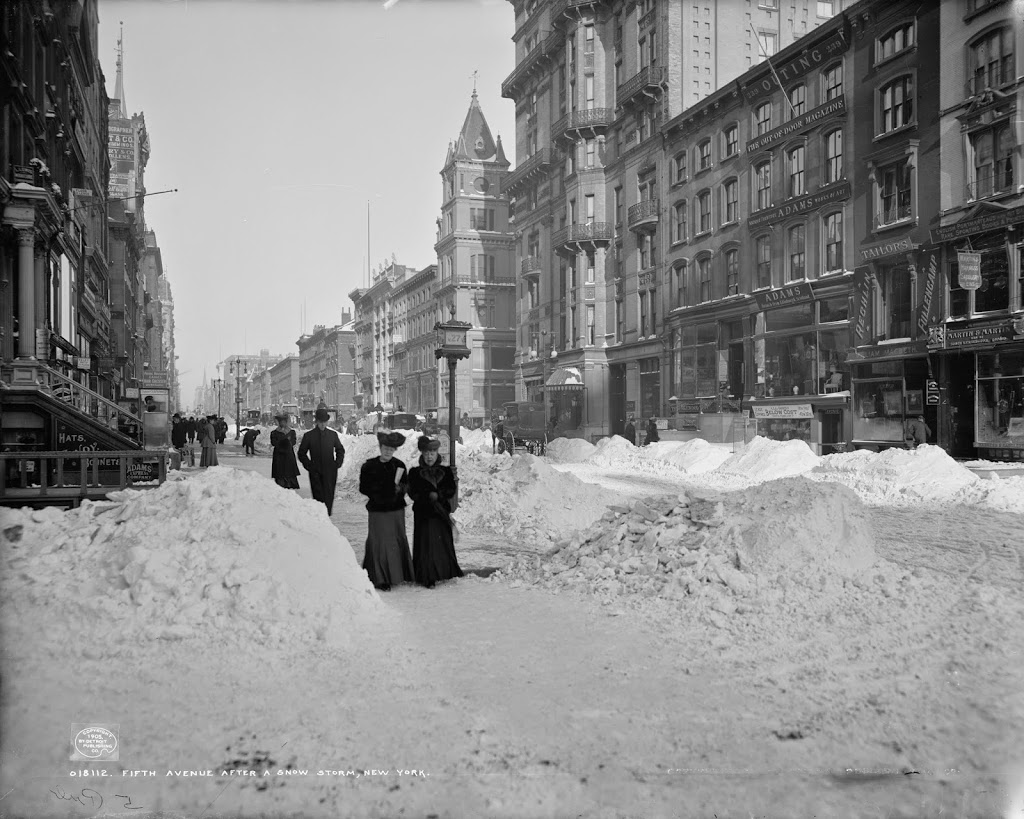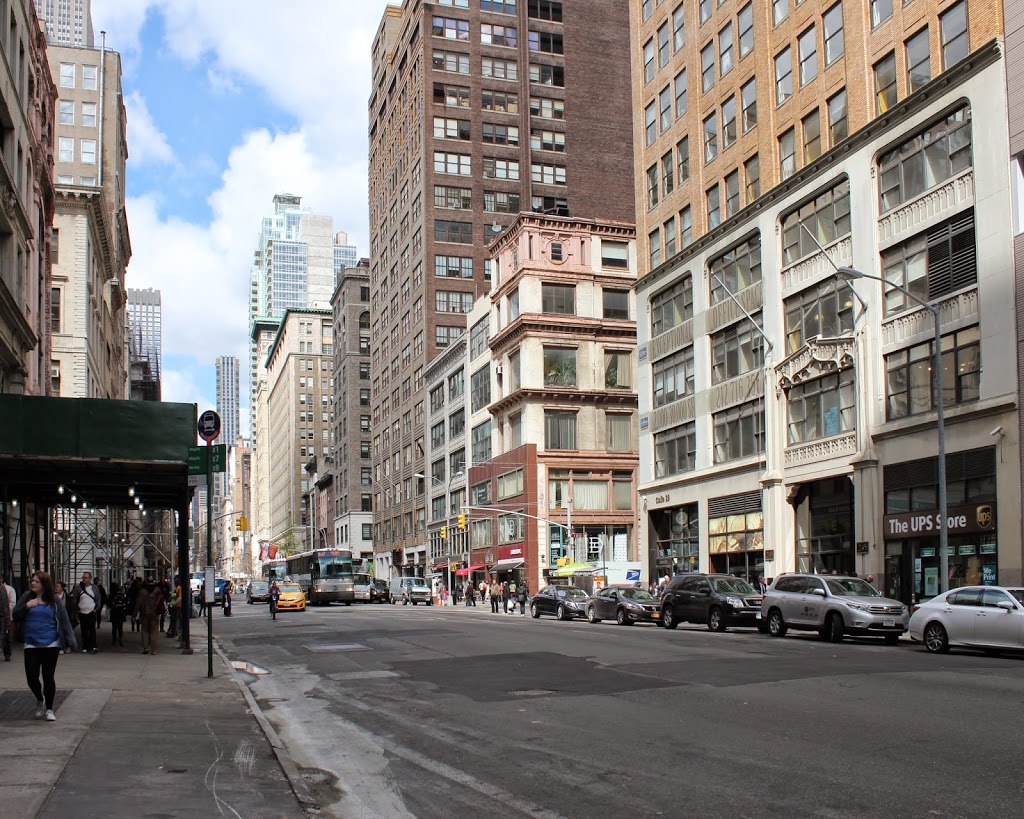The view of the Flatiron Building around 1902. Image courtesy of the Library of Congress, Detroit Publishing Company Collection.
The same scene in 2014:
Another view of the Flatiron Building, looking south with Broadway on the left and Fifth Avenue on the right. Besides the Flatiron Building, a few other ones still exist from the 1902 photo, including the building with the gold dome to the right, and the short, yellow brick building just beyond the Flatiron Building along Broadway. Notice the horse-drawn cabs along the side of Broadway – this photo was taken from almost the same location as this one, except in the road instead of along the sidewalk.

